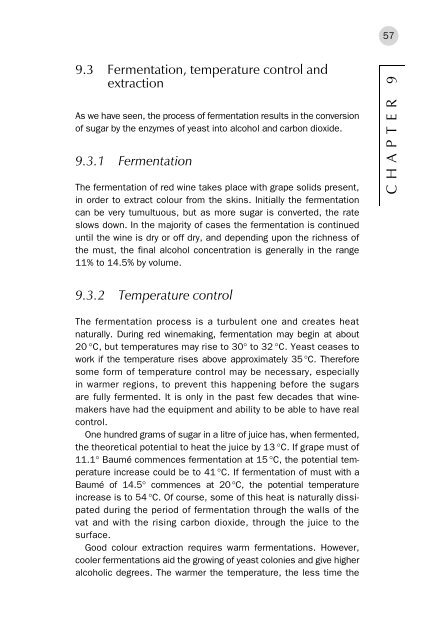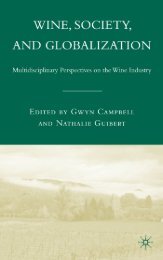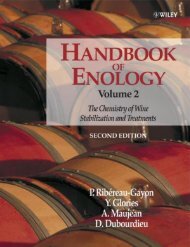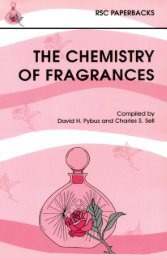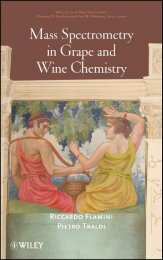Wine Production : Vine to Bottle - Vinum Vine
Wine Production : Vine to Bottle - Vinum Vine
Wine Production : Vine to Bottle - Vinum Vine
Create successful ePaper yourself
Turn your PDF publications into a flip-book with our unique Google optimized e-Paper software.
57<br />
9.3 Fermentation, temperature control and<br />
extraction<br />
As we have seen, the process of fermentation results in the conversion<br />
of sugar by the enzymes of yeast in<strong>to</strong> alcohol and carbon dioxide.<br />
9.3.1 Fermentation<br />
The fermentation of red wine takes place with grape solids present,<br />
in order <strong>to</strong> extract colour from the skins. Initially the fermentation<br />
can be very tumultuous, but as more sugar is converted, the rate<br />
slows down. In the majority of cases the fermentation is continued<br />
until the wine is dry or off dry, and depending upon the richness of<br />
the must, the final alcohol concentration is generally in the range<br />
11% <strong>to</strong> 14.5% by volume.<br />
CHAPTER 9<br />
9.3.2 Temperature control<br />
The fermentation process is a turbulent one and creates heat<br />
naturally. During red winemaking, fermentation may begin at about<br />
20 °C, but temperatures may rise <strong>to</strong> 30° <strong>to</strong> 32 °C. Yeast ceases <strong>to</strong><br />
work if the temperature rises above approximately 35 °C. Therefore<br />
some form of temperature control may be necessary, especially<br />
in warmer regions, <strong>to</strong> prevent this happening before the sugars<br />
are fully fermented. It is only in the past few decades that winemakers<br />
have had the equipment and ability <strong>to</strong> be able <strong>to</strong> have real<br />
control.<br />
One hundred grams of sugar in a litre of juice has, when fermented,<br />
the theoretical potential <strong>to</strong> heat the juice by 13 °C. If grape must of<br />
11.1° Baumé commences fermentation at 15 °C, the potential temperature<br />
increase could be <strong>to</strong> 41 °C. If fermentation of must with a<br />
Baumé of 14.5° commences at 20°C, the potential temperature<br />
increase is <strong>to</strong> 54 °C. Of course, some of this heat is naturally dissipated<br />
during the period of fermentation through the walls of the<br />
vat and with the rising carbon dioxide, through the juice <strong>to</strong> the<br />
surface.<br />
Good colour extraction requires warm fermentations. However,<br />
cooler fermentations aid the growing of yeast colonies and give higher<br />
alcoholic degrees. The warmer the temperature, the less time the


